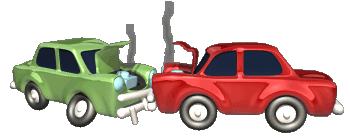

Helping PSAPs to interpret eCall data

eCall DATA REGISTRY

HGV eCall

When your car crashes, the emergency responders want to know what car? where? how many passengers?
But if a truck crashes the emergency responders also need to know what is in the truck.
Is it petrol? hazardous chemicals? Radioactive?
How much hazardous substance may be on the road, or likely to catch fire?
Even technically non- hazardous materials can be a major hazard on the highway! - Ball bearings, grease, detergent, livestock, etc.
CEN TS16405 ITS - eSafety - eCall HGV optional additional dataset
Provides 2 options:
a) A link to an IP address where detail of the content of the HGV can be found
b) Detail of the cargo on-board
This data is stored as an "Optional Additional Data" concept as part of the eCall Minimum Set of Data
This data concept definition can be found in the eCall Data Registry
ISO 15638-10 provides a means to send emergency messages to landside application service providers using on-board ITS-station communications via cellular communications, 5.9 GHz communicaitos and other wireless media
NOTE: Triggering mechanisms for HGV eCall will likely be different than those for light vehicles. In general HGV's do not have 'air-bag' deployment; and in the case of hazardous goods, an eCall may need to be sent in situations where the truck has simply broken down, because of the hazard risk, or risk of theft/hijack etc.
Other eCall initiatives
Managing ADR
(Dangerous Goods)
Learn how this service provision may work in the near future.
Based on HGV eCall, ISO is working with UNECE to develop wireless means to manage ADR (Dangerous Goods). ISO 15638-18
eCall for motor bikes and Mopeds
CEN TC278 WG15 and iHeERO continue to investigate practicable means to extend eCall to motor cyclits and moped users
eCall for Cyclists
CEN TC278 continues to investigate to see if a practicable way can be found to extend eCall to cyclists
eCall for disadvantaged road users
EN TC278 continues to investigate to see if a practicable way can be found to extend eCall to powered wheelchairs, wheelchairs, mentally and physically challenged road users.
eCall technology for other emergency assistance situations
eCall for Cyclists
CEN TC278 continues to investigate to see if a practicable way can be found to extend the use of eCall technology to othe situations such as defibrillator use